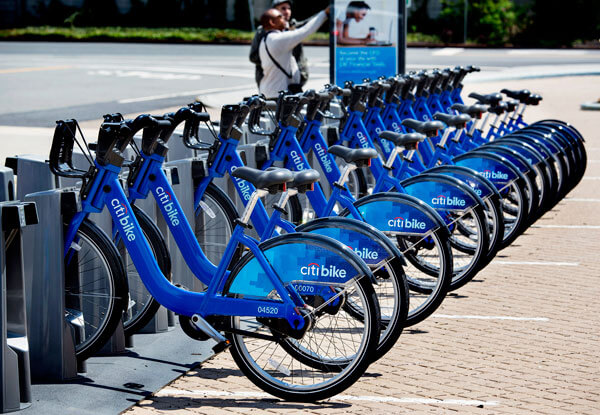
Bob Fass hosting his “Radio Unnameable” show at WBAI in 1991.
BY CLAYTON PATTERSON | I am troubled and saddened by the fact that America is losing its middle class and becoming a country divided into the rich and the poor. Romney certainly made that point clear with his recent statement, saying 47 percent of the population is basically made up of non-taxpaying freeloaders seeking a handout — deadbeats that even the president should not be concerned with.
It seems the 1 percent has forgotten that so much of America’s greatness was built on the backs of those who had less. It wasn’t the rich and powerful coming to America looking for a better life who made the majority of the contributions and achievements that made the U.S.A. more powerful than the countries the newcomers were leaving.
The Lower East Side has had more than its share of poverty, human suffering, hardship and political dissidents. Yet, there are also many examples of struggling immigrants and displaced, creative types who have made tremendous contributions to what makes America great. Thankfully, there are a few dedicated people who have worked hard to save the history of the Downtown, underground, creative and political, struggling class. Bob Fass, for no monetary gain, selflessly spent his life working on one such project. He did much more than just save the history. He was also a vital force in making things happen.
Bob Fass’s contribution is very unique. He is multitalented, historically significant, creative, an activist, but most of all, a radio journalist who changed the style, direction, meaning of time on the air and type of programming a radio talk show program followed. He was instrumental in starting free-form radio.
And now a documentary movie called “Radio Unnameable,” produced and directed by Paul Lovelace and Jessica Wolfson, has just been released. The movie does a good job of opening up how important Bob’s contribution is to the history of underground culture and alternative politics.
Bob cleverly developed his form of radio in the least competitive time slot — on the overnight airwaves. He appreciated how many people work and prowl the city at night. In 1965 there were few choices on overnight radio and TV. Not much of a selection for the night shift, the insomniacs, to fill the lost and lonely spaces listeners find themselves in at 3 a.m. Bob’s voice is smooth and steady, like listening to an intimate friend keeping you company. If the listener feels the urge to tell the world something, Bob is a good listener, and his program serves as a vehicle for the normally voiceless to have a voice. His politics are not party based, but based on the idea that what’s good for the people is good for him.
The direction his midnight-to-5 a.m. WBAI show always takes is dictated by his sense of what’s important at the moment rather than a planned-out set, or what will get him the best ratings. If a riot was going on, he had people on the street phoning in the action. If a musician showed up, he or she could play a set. If radical social activists came by, Bob let them talk. The only real rule and limit was to avoid using the roughly seven profane words that, if used, could give the Federal Communications Commission the right to shut down the station.
In the 1960s a number of the underground musicians who first played on “Radio Unnamable” soon went on to become widely popular in the mainstream, including Bob Dylan and Carly Simon. The first time Arlo Guthrie played “Alice’s Restaurant” in public was on “Radio Unnameable.” The first time Jeffery Jeff Walker sang his “Mr. Bojangles” was on Bob’s show. Bob liked this song so much he would, at times, play it over and over again on the air. On the political front Allen Ginsberg, Kinky Friedman, Abbie Hoffman and Paul Krassner would suddenly show up and become the focus of the night’s entertainment.
The movie does an excellent of job illustrating how skillful Bob became at using radio as a powerful, community, political tool. In the ’60s Bob was one of the most respected and trusted voices in the political struggle and soon became one of the central, frontline power figures in the vortex of a quickly changing society.
The Yippies realized that the message behind an absurd act can have as much influence as, let’s say, a violent one. Bob was a Yippie during the group’s theatrical-absurdist period, helping orchestrate actions like the “Human Fly-In” at Kennedy Airport — a spontaneous gathering of a mass of people all having fun welcoming visitors getting off of the planes. However, when things turned ugly, like at the mass gathering in Grand Central Station when some protesters removed the hands of the clock, the cops went wild. Bob’s listeners captured the melee on the telephone and passed the screams onto Bob and into the airwaves. This is dramatic tape.
The movie does an excellent job highlighting Bob’s early career. And for this reason alone it’s worth seeing, buying, passing onto your friends, helping it get placed into as many historical archives as possible. The documentary is a gem. But it is only a beginning. There is so much more to Bob. Certainly, those of us in the ’80s and ’90s who were on the front lines of the L.E.S. antigentrification movement, owe Bob a huge thank you. And there is a more hidden, secondary message to the movie.
So much of the history outside of the mainstream is being lost. It is the people’s history — about the people that Romney and friends hate so much. Bob gave so much and got so little in return. What we need to do is to make sure his archives are preserved, in shape for the next generation of people to learn from. Bob is a cultural hero and his work needs to be saved. Beyond that, how has he been able to do this for more than 50 years? Go see the movie.





































